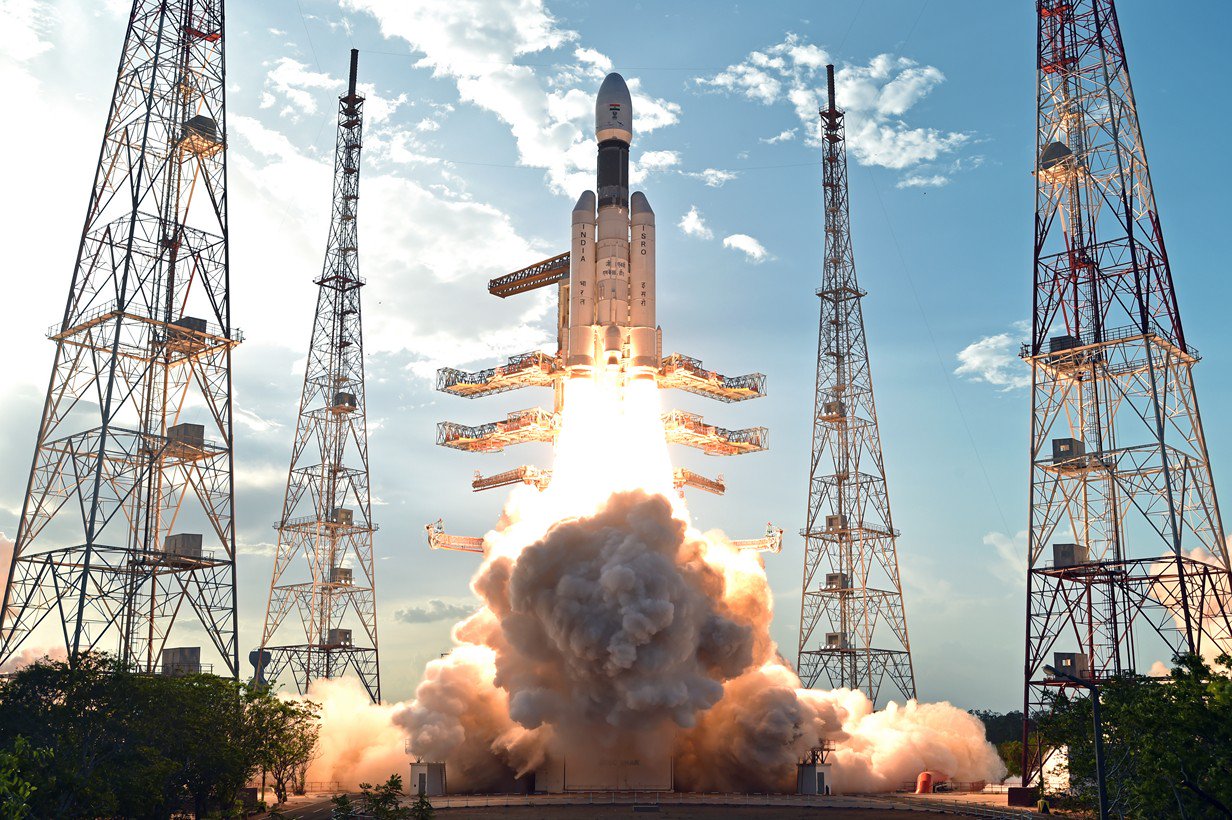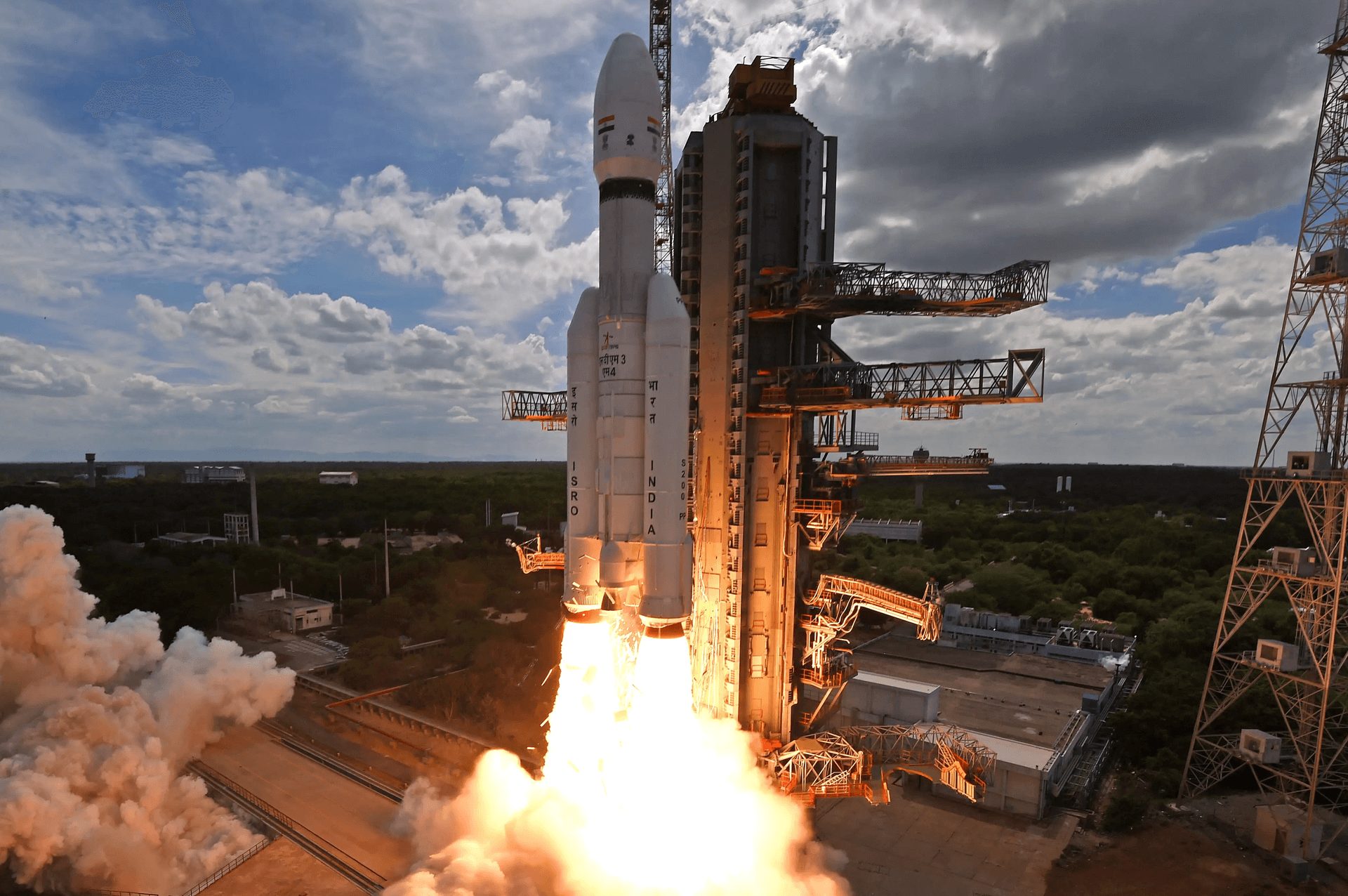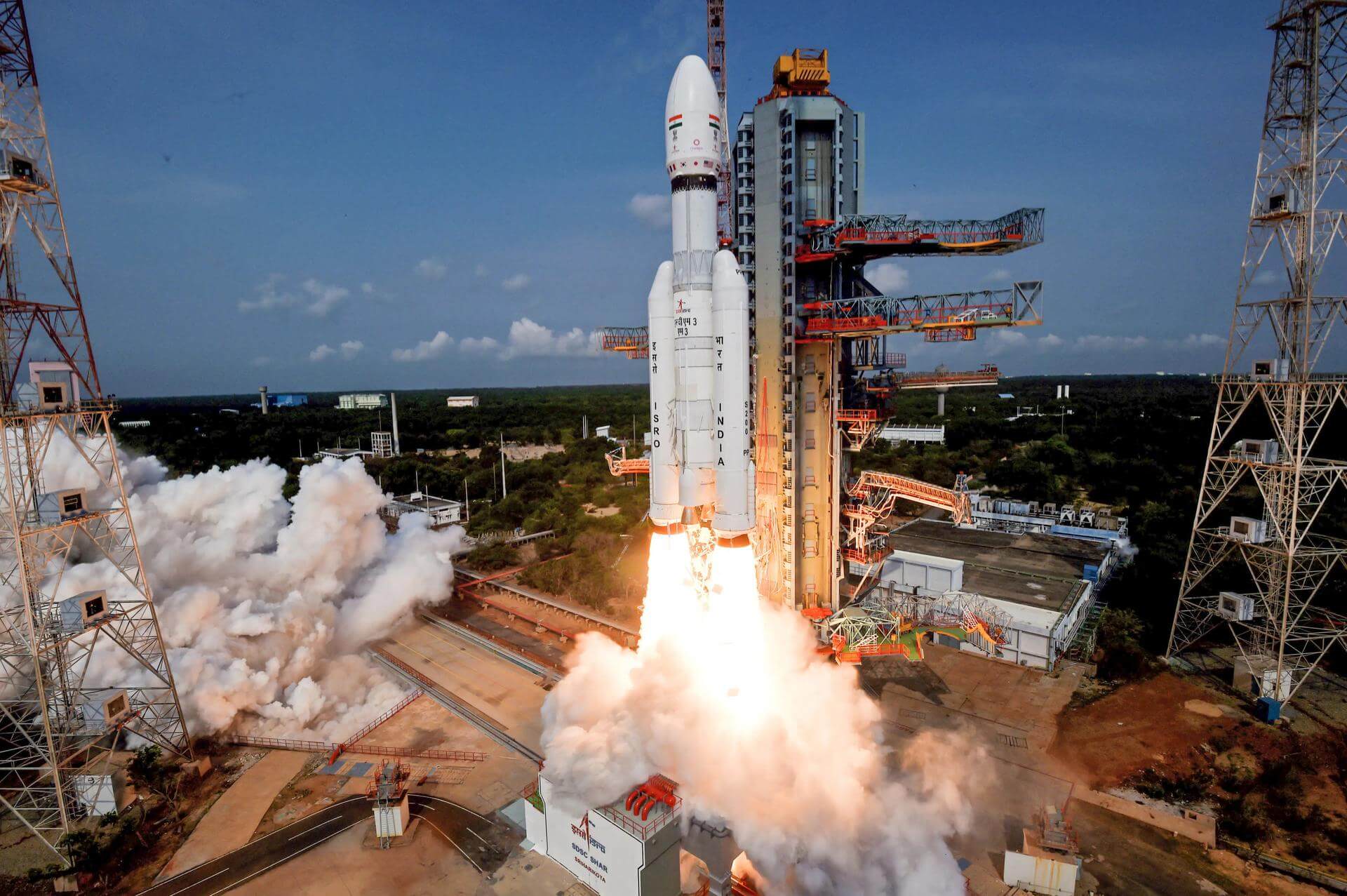
LVM-3 (GSLV Mk III)
ActiveIndian Space Research Organization (ISRO)
Dec. 18, 2014
Description
The Launch Vehicle Mark-3 (LVM-3), previously called Geosynchronous Satellite Launch Vehicle Mark III (GSLV Mk III), is a three-stage medium-lift launch vehicle developed by the Indian Space Research Organisation (ISRO). It is designed to launch satellites into geostationary orbit, and is intended as a launch vehicle for crewed missions under the Indian Human Spaceflight Programme.
Specifications
-
Max Stage
3 -
Length
43.4 m -
Diameter
4.0 m -
Fairing Diameter
― -
Launch Mass
629.0 T -
Thrust
11898.0 kN -
Apogee (Sub-Orbital)
40000.0 km
Family
-
Name
LVM-3 (GSLV Mk III) -
Family
― -
Variant
― -
Alias
― -
Full Name
Launch Vehicle Mark-3 (GSLV Mk III)
Payload Capacity
-
Launch Cost
$46000000 -
Low Earth Orbit
10000.0 kg -
Geostationary Transfer
Orbit
5000.0 kg -
Direct Geostationary
― -
Sun-Synchronous Capacity
―
Indian Space Research Organization
Government
Chairman: V. Narayanan
ISRO 1969The Indian Space Research Organisation (ISRO) is the space agency of the Government of India headquartered in the city of Bangalore. Its vision is to "harness space technology for national development while pursuing space science research and planetary exploration."
Upcoming Spaceflights
LVM-3 | BlueBird Block 2 #1
Indian Space Research Organization | IndiaSatish Dhawan Space Centre, India
Dec. 24, 2025, 3:24 a.m.
Status: Go for Launch
Mission:
AST SpaceMobile’s Block 2 BlueBird satellites are designed to deliver up to 10 times the bandwidth capacity of the BlueBird Block 1 satellites, required to achieve 24/7 continuous cellular broadband service coverage in the United States, with beams designed to support a capacity of up to 40 MHz, enabling peak data transmission speeds up to 120 Mbps, supporting voice, full data and video applications. The Block 2 BlueBirds, featuring as large as 2400 square foot communications arrays, will be the largest satellites ever commercially deployed in Low Earth orbit once launched. This launch will feature a single satellite.
Low Earth OrbitLVM-3 | Gaganyaan-1
Indian Space Research Organization | IndiaSatish Dhawan Space Centre, India
TBD January, 2026
LVM-3 | Gaganyaan-2
Indian Space Research Organization | IndiaSatish Dhawan Space Centre, India
TBD December, 2026
LVM-3 | Gaganyaan-3
Indian Space Research Organization | IndiaSatish Dhawan Space Centre, India
TBD December, 2026
LVM-3 | Gaganyaan-4
Indian Space Research Organization | IndiaSatish Dhawan Space Centre, India
TBD March, 2027
LVM-3 | Chandrayaan-4 First Launch
Indian Space Research Organization | IndiaSatish Dhawan Space Centre, India
TBD December, 2027
Status: To Be Determined
Mission:
Chandrayaan-4 is a planned lunar sample-return mission of Indian Space Research Organisation (ISRO) and will be the fourth mission of its Chandrayaan programme. The mission consist of five modules, namely the DM (Descender Module), AM (Ascender Module), TM (Transfer Module), RM (Re-entry Module) and PM (Propulsion Module). The planned mission life is 1 lunar day and the landing site will be near the Lunar South Pole. The first launch will lift the DM (Descender Module) and AM (Ascender Module) to orbit.
Lunar OrbitLVM-3 | Chandrayaan-4 Second Launch
Indian Space Research Organization | IndiaSatish Dhawan Space Centre, India
TBD December, 2027
Status: To Be Determined
Mission:
Chandrayaan-4 is a planned lunar sample-return mission of Indian Space Research Organisation (ISRO) and will be the fourth mission of its Chandrayaan programme. The mission consist of five modules, namely the DM (Descender Module), AM (Ascender Module), TM (Transfer Module), RM (Re-entry Module) and PM (Propulsion Module). The planned mission life is 1 lunar day and the landing site will be near the Lunar South Pole. The second launch will lift the TM (Transfer Module), RM (Re-entry Module) and PM (Propulsion Module) to orbit.
Lunar OrbitLVM-3 | CMS-03 (GSAT-7R)
Indian Space Research Organization | IndiaSatish Dhawan Space Centre, India
Nov. 2, 2025, 11:56 a.m.
LVM-3 | Chandrayaan-3
Indian Space Research Organization | IndiaSatish Dhawan Space Centre, India
July 14, 2023, 9:05 a.m.
Status: Launch Successful
Mission:
Chandrayaan-3 is India's third mission to the Moon. It repeats most of the failed Chandrayaan-2 mission, with only a lander and rover. After a controlled descent, the lander will perform a soft landing on the lunar surface at a specified site and deploy the rover. The six-wheeled rover weighs around 20 kg and will operate on solar power. It will move around the landing site, performing lunar surface chemical analysis and relaying data back to Earth through the orbiter. The lander will be collecting data on Moon-quakes, thermal properties of the lunar surface, the density and variation of lunar surface plasma. Altogether, the Chandrayaan-3 mission will collect scientific information on lunar topography, mineralogy, elemental abundance, lunar exosphere and signatures of hydroxyl and water-ice.
Lunar OrbitLVM-3 | OneWeb 18
Indian Space Research Organization | IndiaSatish Dhawan Space Centre, India
March 26, 2023, 3:30 a.m.
Status: Launch Successful
Mission:
A batch of 36 satellites for the OneWeb satellite constellation, which is intended to provide global Internet broadband service for individual consumers. The constellation is planned to have around 648 microsatellites (of which 60 are spares), around 150 kg each, operating in Ku-band from low Earth orbit.
Polar OrbitLVM-3 | OneWeb 14
Indian Space Research Organization | IndiaSatish Dhawan Space Centre, India
Oct. 22, 2022, 6:37 p.m.
Status: Launch Successful
Mission:
A batch of 36 satellites for the OneWeb satellite constellation, which is intended to provide global Internet broadband service for individual consumers. The constellation is planned to have around 648 microsatellites (of which 60 are spares), around 150 kg each, operating in Ku-band from low Earth orbit.
Polar OrbitLVM-3 | Chandrayaan-2
Indian Space Research Organization | IndiaSatish Dhawan Space Centre, India
July 22, 2019, 9:13 a.m.
Status: Launch Successful
Mission:
Chandrayaan-2 is India's second mission to the Moon. It consists of an orbiter, lander and rover. After reaching the 100 km lunar orbit, the lander housing the rover will separate from the orbiter. After a controlled descent, the lander will perform a soft landing on the lunar surface at a specified site and deploy the rover. Six-wheeled rover weighs around 20 kg and will operate on solar power. It will move around the landing site, performing lunar surface chemical analysis and relaying data back to Earth through the orbiter. The lander will be collecting data on Moon-quakes, thermal properties of the lunar surface, the density and variation of lunar surface plasma. The orbiter will be mapping lunar surface. Altogether, Chandrayaan-2 mission will collect scientific information on lunar topography, mineralogy, elemental abundance, lunar exosphere and signatures of hydroxyl and water-ice.
Lunar OrbitLVM-3 | GSAT-29
Indian Space Research Organization | IndiaSatish Dhawan Space Centre, India
Nov. 14, 2018, 11:38 a.m.
LVM-3 | GSAT-19
Indian Space Research Organization | IndiaSatish Dhawan Space Centre, India
June 5, 2017, 11:58 a.m.
Status: Launch Successful
Mission:
GSAT-19 is an Indian geostationary communications satellite. With a mass of 3200 kg and expected operational lifetime of 15 years, this satellite will test several epxerimental technologies like electrical propulsion, deployable thermal radiatiors, indigenious Li-Ion batteries.
Geostationary Transfer OrbitLVM-3 | CARE (Demo Flight)
Indian Space Research Organization | IndiaSatish Dhawan Space Centre, India
Dec. 18, 2014, 4 a.m.
Status: Launch Successful
Mission:
The CARE is a mock-up of the planned Indian crewed space capsule. Its mission is to study re-entry and thermal behaviour. CARE does not have the pressure-vessel of the final capsule, but is only a structural mock-up. It will re-enter and land in the bay of Bengal to be retrieved. For the suborbital flight, it is mounted upside-down inside the payload fairing. This launch uses a non-functional 2nd stage. CARE separates from the launch vehicle after 1st stage shutdown.
SuborbitalAriane 62
Galileo L14 (FOC FM33 & FM34)
Ariane Launch Area 4 - Guiana Space Centre, French GuianaPayload consists of two satellites for Europe's Galileo navigation system.
Atlas V 551
Amazon Leo (LA-04)
Space Launch Complex 41 - Cape Canaveral SFS, FL, USAAmazon Leo, formerly known as Project Kuiper, is a mega constellation of satellites in Low Earth Orbit that will offer broadband internet access, thi…
Long March 4B
Ziyuan-3-04
Launch Complex 9 - Taiyuan Satellite Launch Center, People's Republic of ChinaThe ZY-3 (Ziyuan-3, 'Resource-3') series represents China's first high-resolution, stereoscopic mapping satellites for civilian use. The second sa…
Falcon 9
Starlink Group 6-82
Space Launch Complex 40 - Cape Canaveral SFS, FL, USAA batch of 29 satellites for the Starlink mega-constellation - SpaceX's project for space-based Internet communication system.
Falcon 9
Starlink Group 15-12
Space Launch Complex 4E - Vandenberg SFB, CA, USAA batch of 27 satellites for the Starlink mega-constellation - SpaceX's project for space-based Internet communication system.



